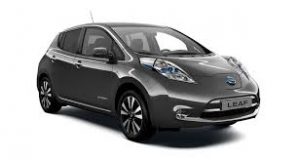Background

Electric cars are hogging the headlines in many countries. For example in Norway, electric cars represent about 40 per cent of new car registrations. Charging stations for electric cars are everywhere. Norwegian government is providing incentives and perks to encourage drivers to purchase electric cars.
Buyers do not pay import tax and VAT on plug-in cars, shaving thousands of US dollars of the upfront cost. Running costs are lower because electricity is cheaper than petrol and diesel, while road tax is reduced, and will drop to zero in 2018.
Electric car owners also do not pay road tolls, ferry fees and city emission charges that other drivers face Moreover, the drivers can park for free and bypass traffic by driving in bus lanes.
A consulting company, EV-Volumes, which tracks electric cars globally, estimated the sales of electric cars have exceeded 3 million units. The list of car companies intending to offer electric car models is growing as shown below:
| No. | Car Manufacturers | Models | Year |
| 1 | Daimler | Smart | 2009 |
| 2 | Peugeot | iOn | 2010 |
| 3 | Mitsubishi | I MiEV | 2010 |
| 4 | Nissan | Leaf | 2011 |
| 5 | Renault | Bongo Z. E. | 2011 |
| 6 | Tesla | Model S P90D, Model S 70D | 2012 |
| 7 | Bollore | Bluecar | 2012 |
| 8 | Honda | Fit EV | 2012 |
| 9 | Ford | Fpcus | 2012 |
| 10 | Renault | Zoe | 2013 |
| 11 | VW | e-Up! | 2013 |
| 12 | BMW | I3 | 2013 |
| 13 | Chevrolet | Spark EV | 2013 |
| 14 | Fiat | 500e | 2013 |
| 15 | Nissan | e-NV200 | 2014 |
| 16 | Kia | Soul | 2014 |
| 17 | VW | e-Golf | 2014 |
| 18 | Mercedes | B-Class ED | 2014 |
| 19 | Tesla | Model X | 2015 |
| 20 | Nissan | Leaf | 2015 |
| 21 | Chevrolet | Chevy Bolt | 2016 |
| 22 | Renault | Zoe upgrade | 2016 |
| 23 | BMW | I3 upgrade | 2016 |
| 24 | Mercedes | Smart Fortwo | 2016 |
| 25 | Citroen | e-Mehari | 2016 |
| 26 | Opel | Ampera-E | 2017 |
| 27 | VW | eGolf upgrade | 2017 |
| 28 | Hyundai | Ioniq EV | 2017 |
| 29 | Mercedes | Cabrio, Forfour | 2017 |
| 30 | Audi | e-tron | 2018 |
| 31 | Jaguar | I-Pace | 2018 |
| 32 | Tesla | Model 3 | 2018 |
| 33 | Daimler | Generation EQ | 2019 |
| 34 | VW | I.D. | 2019 |
| 35 | Lucid Motors | Air | 2019 |
Source: FTWeekend, 4 November/5 November 2017

The March of Robots
Robots are quietly changing the employment landscape. The large mining companies such as Rio Tinto are replacing human drivers in managing the operations of the huge trucks that carry commodities such as iron ores. The drivers who drive these monster trucks are well paid but the job is dangerous. In Rio Tinto’s mines at the remote Pilbara in Western Australia, the monster trucks are now driverless. They are being controlled 1,046 kilometres away in a control room in Perth, Western Australia. These monster trucks operate 24 hours, without tiring.

In Santa Clara, California, US, robots are being used in selling houses. These robots are operated by the high technology property management start-up, Zenplace, and are intended to take the hassle out of coordinating showing times between real estate agents and prospective renters. The robot is operated by a real estate agent to save driving time in coordinating with the client’s schedules. Now, with the robot, the real estate agent can do between 150 and 20 showings a day, which enhances his/her commissions.

The two cases show that robots can have both negative and positive impacts. Even in a developing country like Malaysia, robots and automation are chipping away many routine jobs. Fortunately, the employees, who are affected by automation, are re-assigned to other jobs.
In 2018, the employees, whose jobs are taken by robots, may not be so lucky.
Best wishes for 2018 from Dato’ Dr Anuar Md Nor, President, Bison Consulting.